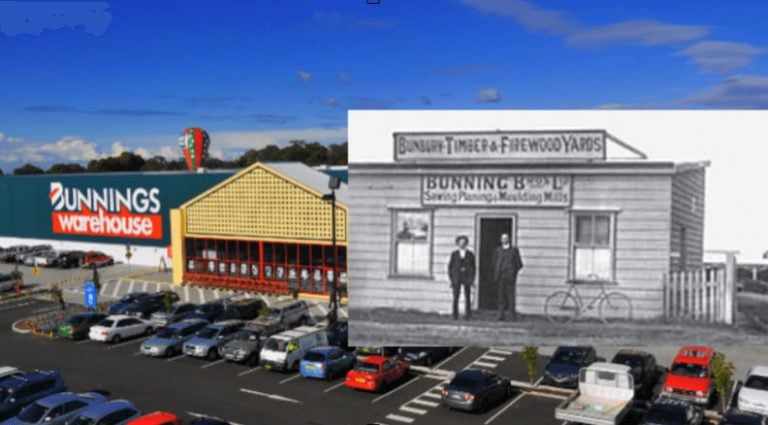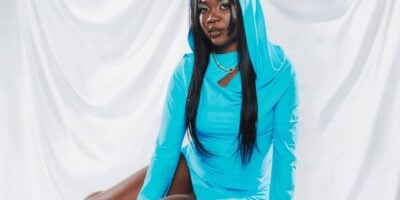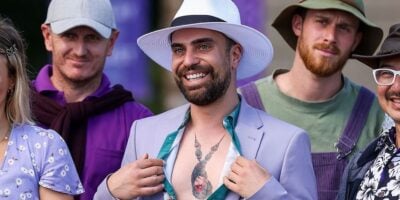As with a number of uniquely-Australian success stories, this one begins overseas.
Brothers Robert and Arthur were born and bred in East London, and had plans to sail to California via Fremantle in June of 1886.
Their sister lived in Fremantle and the brothers had organised a quick visit before sailing off. They soon nixed their California dreamin’ after landing contracting work to build a new wing at the Fremantle Lunatic Asylum.
Think about that: was it not for our late-19th Century penchant for locking away many, many people exhibiting what would later be deemed perfectly normal, human behaviour, you wouldn’t be enjoying your Bunnings sausage sandwich right now.
The brothers enjoyed the flowing profits and plentiful business opportunities that came with the WA gold boom in the 1890s — building a post office and a hospital — and by 1907, had launched Bunning Brothers Limited and opened their first sawmill/timber yard.
Here it is.
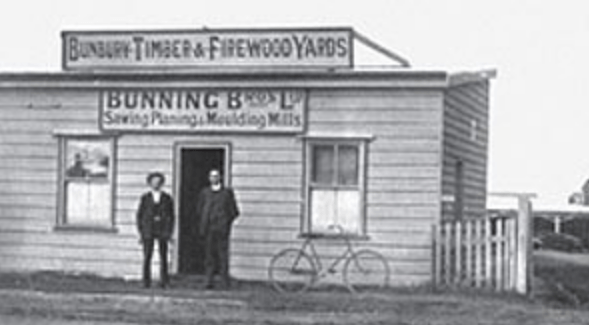
Love Music?
Get your daily dose of metal, rock, indie, pop, and everything else in between.
The building was gutted by a fire in 1914 — possibly an early failed attempt at the Bunnings sausage sizzle — and the Great Depression saw their fortunes fall further, but Robert Bunning managed to steer the business towards success until his death in 1936.
His three sons (Charles, Thomas and Joseph) took over and expanded into brick-making and ship-building — most famously building the nimble, slim ‘snake boats’ that the top-secret Z Special Unit used in World War II — and then rode the Australian housing boom of the 1950s to become the country’s most successful logging operators.
It was this same post-war boom that saw them start to sell building hardware.
Struck by the rise of American-style supermarkets, in which items were on display shelves, accessible to customers, rather than behind the counter (you can thank your boy F.W. Woolworth for that), they decided to double down on this new retail venture and opened the first modern-day Bunnings in West Perth in 1961.
The first Bunnings Super Centre would open the following year, and by the time the third generation of Bunnings — this time cousins Bob and Gavin — had joined the board in the mid-’70s, they were the biggest hardware retailers in the country.
The business was sold off to Wesfarmers in 1992, who launched the first ‘warehouse’ Bunnings in Melbourne the following year.
Here’s Jeff Kennett, then Victorian Premier, opening it.
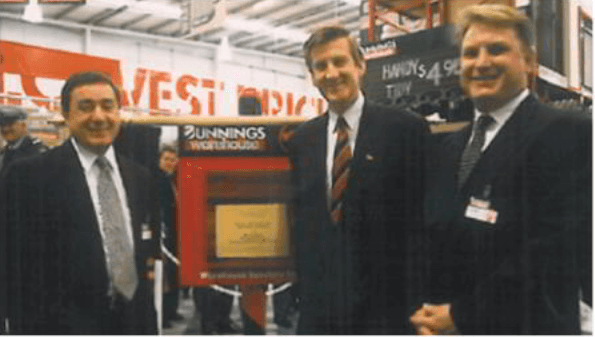
Since then, the company has acquired numerous competitors, including BBC hardware, and as of 31 December 2016, Bunnings Australia and New Zealand operates out of 357 trading locations, employing more than 40,000 people.
As for the sausage sizzles, they started off as a community fundraising initiative, a way for the company to give back to various organisation committees. They have remained as such, but have become larger than the stores now – with a six-month waiting list for those groups hoping to organise one.
The beauty of the Bunnings sizzle is they keep it very simple. When a controversy erupted over the ban on bacon at such events (yup!), the company felt compelled to offer a statement to Daily Mail Australia.
“Our reasons behind keeping the offer simple and offering meat sausages is to ensure that all community groups are able to host a fundraiser sausage sizzle with the greatest amount of ease, along with providing a consistent offer for customers across all our stores,” Michael Schneider, Bunnings MD said.
“On a case by case basis, we also allow community groups to have a vegetarian fundraising sausage sizzle if that is their preference, which is supported by appropriate customer signage.”
In other words, Bunnings isn’t going gourmet anytime soon. Lucky! It just wouldn’t suit the plastic deck chairs…
—–
For a deeper dive, read the 1986 book The Timber People, A History Of Bunnings Limited, by Jenny Mills if you can find it anywhere.































